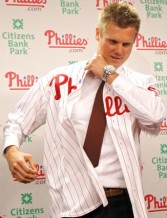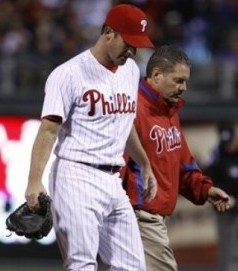Closers have been in both high demand and overabundant supply this offseason. Jonathan Papelbon set the market early with a 4-year, $50 million contract, and since then, the likes of Heath Bell, Joe Nathan, and Frank Francisco have fallen in line. Meanwhile, Ryan Madson and Francisco Cordero remain on the free agent market, while names like Carlos Marmol, Andrew Bailey, and Joakim Soria continue to be mentioned as hot commodities on the trade front.
When the Yankees signed Rafael Soriano last winter, it seemed like a reach at the time, and this year’s offseason activity has confirmed it. At 3-years and $35 million, Soriano’s AAV of $11.7 million is just a shade below Papelbon’s and well in excess of what the Marlins and Rangers gave to Bell and Nathan, respectively. Such is the advantage of being the only closer available on the market, especially during a year in which the Yankees aren’t trying to stay on a budget.
Despite the market glut, it seems likely that teams still wishing to acquire a closer will have to pay a hefty price in terms of dollars or prospects. That won’t impact the Yankees, however, because the team’s bullpen is both strong and deep. In fact, Soriano projects to be the “seventh inning guy”, which is very impressive when you consider he would be the closer on many other teams. So, perhaps Brian Cashman should be thinking about leveraging the Yankees’ relative strength and using the inflated closer market to help unload a contract he didn’t want in the first place?
With $25 million owed over the next two seasons, Soriano isn’t cheap. However, if the Yankees were willing to eat about $5 million, it would reduce his AAV to $10 million, or just over the $9 million that the Marlins will be paying Heath Bell. At first glance, that still seems too high, but when you compare the two pitchers over their careers, a similar salary seems appropriate. Granted, Bell has been healthier and occupied the closer’s role for longer, but the extra year on his contract could be viewed as the premium for that experience.









